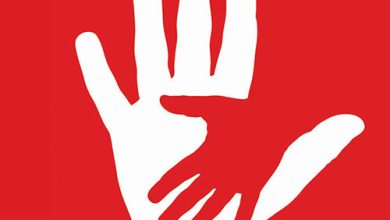CHILDREN MUSTN’T LOSE OUT
Janaka Perera wants the education system reformed and made more meaningful
Speaking about education, American journalist Bob Talbert once opined: “Teaching kids to count is fine but teaching them what counts is best.”
Changes are obviously necessary in education systems but how far these reforms have contributed to Sri Lanka’s overall requirements is the question. Apparently, the current guidelines close the doors of popular schools to children of parents with poor educational backgrounds.
According to educational experts, despite the presence of ‘free education,’ the child of a carpenter with Grade 10 education will have only a slim chance of gaining admission to a popular school while the offspring of a degree holding professional is assured of a place in the same establishment.
During the April 1971 insurgency, a group of insurgents had confronted a young assistant superintendent on a plantation. When the insurgent leader asked him what educational qualifications he had, he replied: “GCE O-Level.”
Further questioning revealed that the latter was from an elite Colombo school. Then the insurgent had responded saying that he is an arts graduate who had studied in a village school and was now unemployed. In the second insurgency of 1987-90, science graduates too were involved.
In a materialistic society, education is wrongly seen as a means to equality. Successful stories of a few who made it good from humble beginnings after studying hard doesn’t mean equal opportunities under the prevailing system.
As education experts have noted, the framers of our constitution conveniently overlooked the need to provide equal facilities as far as possible to all government schools over the past seven decades. It’s no wonder that parents try to admit their children to the best schools in the state system or outside it.
Furthermore, the Department of Education is addicted to a culture of conducting competitive examinations, and creating unrest among children and parents. Consequently, schoolchildren are bred like racehorses.
While quoting a Harvard University professor, the former Dean of the Faculty of Management Studies and Commerce at the University of Sri Jayewardenepura Dr. Anura Kumara Uthumange says: “Education is focussed on gaining excellence without a soul.”
Sri Lankan authorities should study the educational policies of advanced countries that have been developed in the best interests of students. An excellent example is Finland where the school system is totally funded by the state and children are the happiest. It has the highest rate of college (i.e. university) attendance (viz. 66%) in Europe.
Here are some important features of the Finnish education system...
Children don’t start school until they are seven. Ninety percent of Finnish children attend preschool starting at age five with an emphasis on play and socialising.
Compared with other systems, they rarely take exams or do homework until they are well into their teens. Finnish children get 75 minutes of recess a day and have a 15 minute break after every lesson. Outdoor physical activity is highly encouraged.
They are never burdened with more than half an hour of homework each night.
Finnish kids attend school fewer days than 85 percent of kids in other developed nations. There are few, if any, mandatory tests in Finland until a single exam is held at the end of high school.
Teachers spend only four hours a day in the classroom, and take two hours a week for professional development and student progress assessments.
When students are 16, they can decide if they want to attend the Finnish equivalent of high school to prepare them for university or enter vocational training.
Teachers are effectively given the same status as doctors and lawyers. They work extremely hard with weaker students but there is no stress on competition.
In comparison, schoolchildren in Sri Lanka suffer from stress due to examinations and parental pressure. They don’t get their midday meal till 2.30 p.m. or three o’clock each day. This puts them at a very high risk of acquiring noncommunicable diseases such as diabetes and heart disease.
They don’t have adequate playtime or leisure to read books and hardly enjoy childhood. School dropout rates are high and this has even led to suicide among youth.
There’s a mismatch between job opportunities and available skills, and very low productivity in terms of per capita income.
Many poor villagers can’t afford to send their children to schools far away. Children are very tired after travelling long distances from their village to town with more time being spent commuting and doing homework than relaxing at home.
Rural children face increased competition in the new secondary schools and tend to drop out. This has also led to suicide among youth.
It’s high time that the government reviews our education system, from preschool to university, and establishes policies that will benefit society at all levels.






